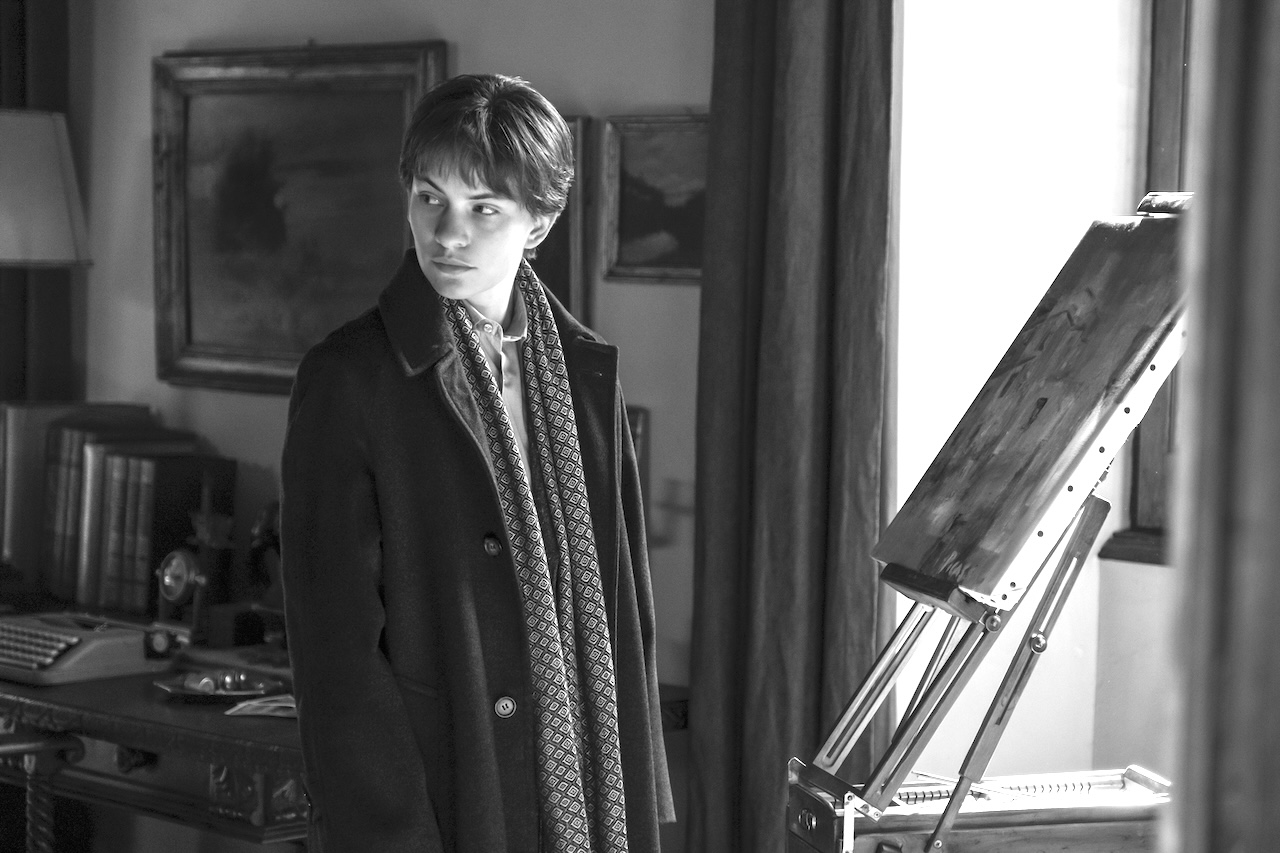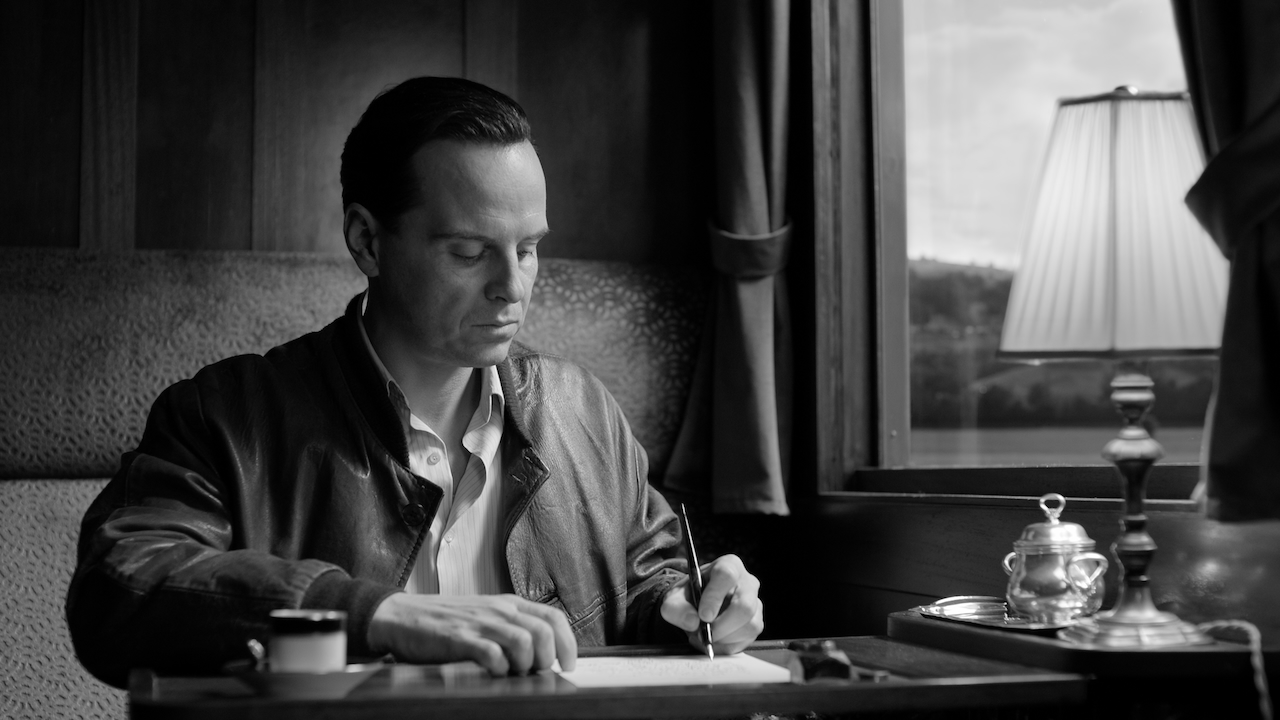Based on the popular crime novels of Patricia Highsmith, the character of Thomas Ripley was created in 1955. The Ripley novels have been adapted into film, television and radio over the decades. Steven Zaillian (The Irishman, The Girl With The Dragon Tattoo) recently took a stab at adapting these novels into a sleek noir television series. Steven spoke with Creative Screenwriting Magazine about his take on this grifter starting with Ripley’s attraction to audiences.
Steven can’t conclude why audiences find the Ripley character (played by Andrew Scott) so captivating. “That’s the question that people often ask. I don’t really parse it out or analyze it. I could try to figure it out, but I never have,” confesses Zaillian over the six years he’s spent on the project. “I just tried to tell the story and see how this character behaves in all of these situations.”

Steven Zaillian. Photo by Charley Gallay/ Getty Images for Netflix
The writer is fully aware of the many incarnations of the story, but he only chose to adapt the novels rather than the films, which are themselves an adaptation. “People seem to forget that the 1999 movie, The Talented Mr. Ripley starring Matt Damon and Gwynneth Paltrow, was itself a remake. I like the film, but I never considered it as the only version of the story. The main version of the story to me was the novel. I started and ended with that.”
Zaillian has a full eight hours to explore the character in his limited series – something a film can’t do. “It’s something more like a novel, something that doesn’t get consumed in two hours, but has the feeling and the tone of the book itself.”
Patricia Highsmith imbues her stories with atmosphere of the 50s and 60s that she maintained throughout the Ripley novels.
“I think that you see it from the beginning when we’re in New York. It has a very film noir feeling to it, which I felt was appropriate for that period, and even for that period of cinema,” says Zaillian. He also wanted a specific mood in the Italian-set scenes of the story. “I wanted to see Italy, not as some kind of tourist destination, which it wasn’t in 1960, but as a rather interesting and sinister place for the story to take place in. At the same time, I did want to get into the culture of 1960, which had a lot to do with the music.”
However, he did use a lot of the 60s Italian pop music in Ripley. It was something he hadn’t seen before in a film, except perhaps in La Dolce Vita.
This idea of a combination of film noir and La Dolce Vita was very appealing to me
Who Is Thomas Ripley?
Patricia Highsmith gave Thomas Ripley a backstory in her first novel to provide limited explanation into his transformation into a likeable, amoral, killer. He was orphaned at age five and lived with his abusive aunt until he escaped to New York City. After failing as an actor, he made a meager living as a con artist through forgery and impersonating others.
Thomas Ripley is an opportunist and survivalist. He’s sophisticated and lives a luxurious lifestyle in Italy. Although, he displays affection for his victims, he has a callous disinterest after killing them.
“He’s not a master strategist. He’s quite improvisational. He’s not a professional killer. His greatest quality is his ability to lie convincingly and to keep doing it even when people start recognizing the lies for what they are. He’s not perfect at it, but he’s quite determined.”
“I think the great thing about Highsmith is that for all of these terrible things that he does, you want him to get away with it. And that’s a kind of magic, I think, in terms of how she created this character,” he continues.
Steven Zaillian chose to minimize Ripley’s backstory in his series. After all, he’s a liar, so any mentions of his tragic past may not even be true. “At one point, Marge [Sherwood (Dakota Fanning), the widow of the man he killed] says he’s a liar. It’s his profession. That’s how he makes his living from the first moment we meet him until the end. And so, to talk about his background in some honest way, doesn’t serve the character or the story.”
Zaillian doesn’t morally judge Ripley either. “My thing is just show the behavior, show him in the context of what he’s doing, what the plot is, and what the scenes are,” he explains.
Ripley makes many references to the artist Caravaggio. At first, it was to illustrate Steven’s interest in the artist’s paintings when he visited Italy. Then he saw the parallels to Tomas (Ripley’s) character. “I just felt that he was the kind of person who would be drawn to them for the way they looked, which was this light and shadow, that beauty. And also because of the drama in those paintings; they’re very dramatic. And then at a certain point, I said to myself, ‘I wonder if I can actually have a scene with Caravaggio?’” Zaillian indeed did in an episode. “Here are these two guys, 350 years apart, drinking a glass of wine after having killed somebody. And I just like that connection.” It’s a reflection of Ripley’s psyche in the artist.
Tom Ripley ends up with everything he wants and moves to an enviable life in Venice as long as his lies hold up.”I think a lot of people mistake him for being some kind of social climber who wants to live like an aristocrat. I think of him as someone who has had a pretty tough life. He would like to live comfortably. But for its own sake, not for any sort of status. He doesn’t even like things for their value. He likes them for their beauty, whether it’s an ashtray, a pen, or a typewriter. These things that other people think of as status symbols, he just appreciates them for their beauty.”
Marge Sherwood & Dickie Greenleaf
Thomas Ripley also navigates other relationships, particularly with Marge Sherwood, who’s always in danger of being Tom’s next victim if she becomes too much of a threat. Yet she follows him in search of her missing husband.

Marge Sherwood (Dakota Fanning) and Dickie Greenleaf (Johnny Flynn) Photo by Philippe Antonello/ NETFLIX
“Marge, from the very beginning, is suspicious of Tom. But her desires and her vanity get in the way. When he starts talking about her book and how he can help her, she sets aside her suspicions, at least temporarily. I think Marge and Tom both have aspirations, and in a way, both use Dickie Greenleaf (Johnny Flynn) for that purpose,” adds Zaillian.
“If it weren’t for Dickie, Tom and Marge might actually be good friends. It’s just that they happen to be in love with the same person, so they’re rivals. I think that they’re not completely unalike.”
“Dickie’s a nice guy and I don’t think he does have a lot of vanity, but he’s naïve. And that becomes problematic for him. He doesn’t see the danger that’s right in front of him.”
Writing Process
Steven Zaillian wrote all eight episodes by himself. “It’s the only way that I would do it because the consistency of the story, the voices and the tone, and everything about the show needed to be the same. It couldn’t change from episode to episode. It allowed me to really think through every moment in this story from the writing, to every shot, and then into the editing.”
“I don’t even write in terms of episodes. To me, it is a 500 page script. It is a very long movie. At some point you have to start dividing it up.” There were natural endings in each episode which lent themselves more to a “chapter” ending.
Steven doesn’t overly concern himself with the precise mechanics of storytelling. “I’m just trying to get to whatever the next story beat is. I’m trying to stay in the moment in between those bigger story points because sometimes I find that the most revealing thing happens in between the big plot points. I take time with those scenes.”
Ripley has many spells of silence in it. Characters, especially Thomas Ripley, are doing things without dialogue or background music. It was imperative that the casting was perfect. “Even for the smaller parts, I’ll look at twenty or thirty people for each one. Once I’ve done that, I have to do very little because I know that these actors are smart and they fully understand the character. So there’s not a lot of talk prior to shooting.”

Freddie Miles (Eliot Sumner) Photo by Philippe Antonello/ NETFLIX
There is a free flow in Zaillian’s process. He doesn’t like pitching. Instead, he relishes the journey of where the story takes him.
Much like a book, the TV series doesn’t need to be binge watched. “You savor things and you get immersed in parts of the story. That was very important to me. There are a couple of set pieces that have little to no dialogue in them, and they go on for twenty minutes. Those were something that I really wanted to do, not just from a storytelling standpoint to place things in real time to get into the mind of the character, but also from a visual point of view.”
Zaillian spent considerable time crafting sequences such as the one in the boat and getting rid of Freddie Miles (Eliot Sumner) in Episode 5. “They’re 25 pages long and we spent a good number of days shooting them, because I knew that the details were going to make them work.” Savoring allows the audience to process Ripley’s interior dialogue.
“You can almost look at that episode as independent of everything else. If you know simply that Tom’s killed somebody and taken over their identity, and now he’s moving to Rome, you almost don’t need to know anything else about him to enjoy that episode. There’s the tension of whether he’s going to get found out and what he does about it. It’s a little movie all by itself, within a larger movie.”
Notably, this episode lies in the middle of the season. Zaillian’s son describes it as “the first song on the B side of a record and it’s a really important song.“
